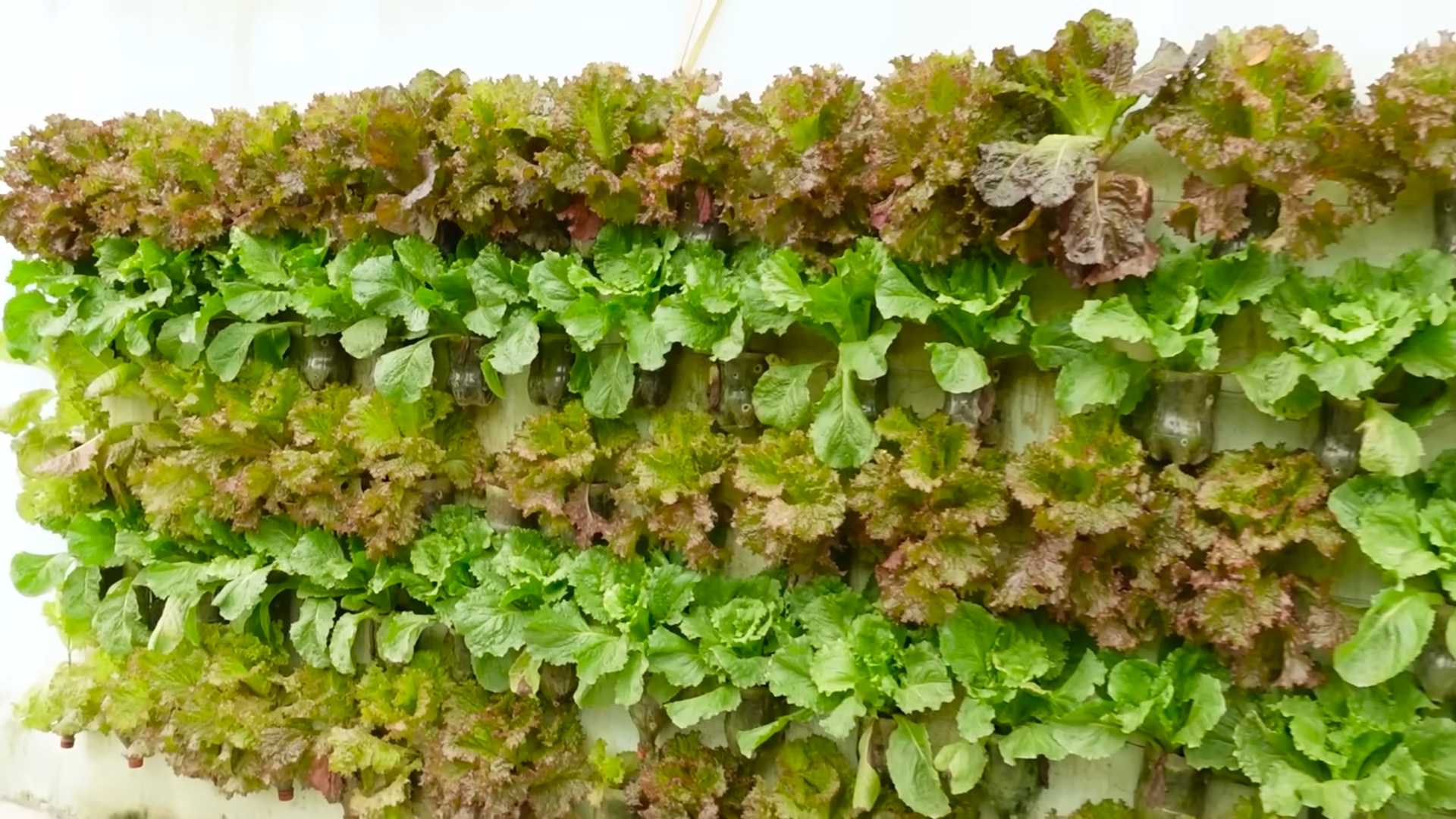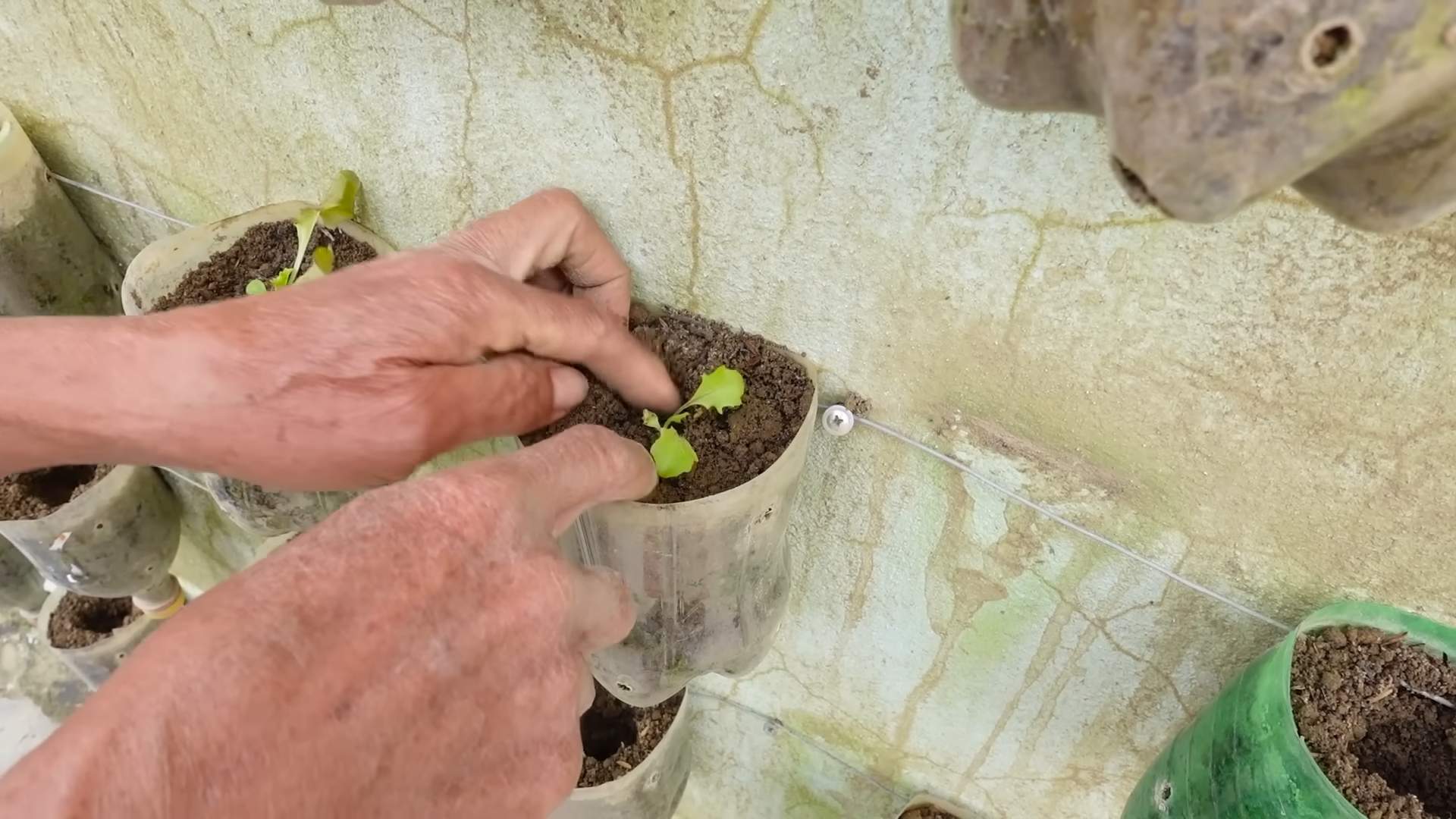Grow Lettuce at Home – imagine stepping outside your back door and harvesting crisp, fresh lettuce for your salad, sandwich, or even a quick snack. No more trips to the grocery store for wilted, overpriced greens! This isn’t just a dream; it’s an achievable reality with a few simple tricks and a little DIY spirit. For centuries, cultivating your own food has been a cornerstone of self-sufficiency and a connection to the earth. From ancient Roman gardens to victory gardens during wartime, growing your own produce has always been a way to ensure access to fresh, healthy ingredients.
But let’s be honest, in today’s busy world, who has time for complicated gardening? That’s where these DIY tricks come in! I’m going to share some easy-to-follow methods that will have you harvesting your own lettuce in no time, even if you have limited space or gardening experience. We’ll explore everything from choosing the right varieties to clever container gardening techniques.
Why do you need these DIY hacks? Because growing your own lettuce is not only incredibly rewarding, but it’s also a fantastic way to save money, reduce your carbon footprint, and enjoy the unparalleled taste of homegrown goodness. Plus, knowing exactly where your food comes from gives you peace of mind. So, let’s dive in and discover how easy it is to grow lettuce at home and transform your space into a thriving mini-garden!

Grow Your Own Delicious Lettuce: A Beginner’s Guide
Hey there, fellow gardening enthusiasts! I’m so excited to share my tried-and-true method for growing lettuce at home. Forget those sad, wilted heads at the grocery store – with a little effort, you can have fresh, crisp lettuce right at your fingertips. This guide is perfect for beginners, so don’t worry if you’ve never grown anything before. Let’s get started!
Choosing Your Lettuce Varieties
First things first, let’s talk lettuce types. There’s a whole world of leafy greens out there, and choosing the right varieties can make all the difference. Here’s a quick rundown of some popular options:
* Loose-leaf Lettuce: This is the easiest type to grow, in my opinion. It doesn’t form a head, so you can harvest leaves as needed. Think varieties like Black Seeded Simpson, Red Sails, and Oak Leaf.
* Butterhead Lettuce: These form loose, buttery heads. They’re known for their delicate flavor and tender leaves. Boston and Bibb are classic choices.
* Romaine Lettuce: This is the lettuce you’ll find in Caesar salads. It has long, upright leaves and a crisp texture.
* Crisphead Lettuce: This is the classic iceberg lettuce. It’s the most challenging to grow, so I recommend starting with other varieties first.
I personally love growing a mix of loose-leaf varieties for a constant supply of salad greens.
Getting Started: Seeds vs. Seedlings
You have two options when it comes to starting your lettuce: seeds or seedlings.
* Seeds: Starting from seed is more economical and gives you a wider variety to choose from. However, it requires a bit more patience and attention.
* Seedlings: Buying seedlings from a nursery is a quicker way to get started. Just make sure the seedlings look healthy and vibrant.
I usually start my lettuce from seed indoors, especially if I want to get a head start on the growing season.
Step-by-Step Guide: Growing Lettuce from Seed Indoors
Here’s how I start my lettuce seeds indoors:
1. Gather Your Supplies: You’ll need:
* Lettuce seeds
* Seed starting trays or small pots
* Seed starting mix (a light, well-draining soil)
* Spray bottle
* Grow lights (optional, but highly recommended)
* Heat mat (optional, but helpful for germination)
2. Prepare Your Seed Starting Trays: Fill your seed starting trays or pots with seed starting mix. Gently pat down the soil to remove any air pockets.
3. Sow the Seeds: Sprinkle a few lettuce seeds on top of the soil in each cell or pot. Lettuce seeds are tiny, so don’t bury them too deep. A light dusting of soil is all they need.
4. Water Gently: Use a spray bottle to mist the soil thoroughly. You want the soil to be moist, but not soggy.
5. Provide Light and Warmth: Place the seed starting trays under grow lights or in a sunny window. If you’re using a heat mat, place it under the trays. Lettuce seeds germinate best at temperatures between 60-70°F (15-21°C).
6. Keep the Soil Moist: Check the soil daily and mist with water as needed to keep it moist.
7. Thin the Seedlings: Once the seedlings have their first true leaves (the second set of leaves), thin them out so that only one strong seedling remains in each cell or pot. I know it’s hard to do, but it’s necessary for healthy growth!
8. Harden Off the Seedlings: Before transplanting the seedlings outdoors, you need to “harden them off.” This means gradually exposing them to outdoor conditions over a period of about a week. Start by placing the trays outdoors in a sheltered location for a few hours each day, gradually increasing the amount of time they spend outside.
Step-by-Step Guide: Growing Lettuce Directly in the Garden
If you prefer to sow your lettuce seeds directly in the garden, here’s how:
1. Choose a Location: Lettuce prefers a sunny location with well-drained soil. However, it can tolerate some shade, especially in hot climates.
2. Prepare the Soil: Amend the soil with compost or other organic matter to improve its fertility and drainage. Rake the soil smooth and remove any rocks or debris.
3. Sow the Seeds: Sow the lettuce seeds in rows, spacing them about 1 inch (2.5 cm) apart. Cover the seeds with a light dusting of soil.
4. Water Gently: Water the soil gently with a watering can or hose.
5. Keep the Soil Moist: Keep the soil moist until the seeds germinate.
6. Thin the Seedlings: Once the seedlings have their first true leaves, thin them out so that they are spaced about 6-12 inches (15-30 cm) apart, depending on the variety.
Transplanting Your Lettuce Seedlings
Once your seedlings are hardened off (or if you bought seedlings from a nursery), it’s time to transplant them into the garden.
1. Prepare the Planting Bed: Choose a sunny location with well-drained soil. Amend the soil with compost or other organic matter to improve its fertility and drainage.
2. Dig Holes: Dig holes that are slightly larger than the root balls of the seedlings. Space the holes about 6-12 inches (15-30 cm) apart, depending on the variety.
3. Remove the Seedlings from Their Containers: Gently remove the seedlings from their containers, being careful not to damage the roots.
4. Plant the Seedlings: Place the seedlings in the holes and backfill with soil. Gently pat down the soil around the base of the plants.
5. Water Thoroughly: Water the seedlings thoroughly after planting.
Caring for Your Lettuce Plants
Once your lettuce plants are in the ground, here’s how to keep them happy and healthy:
* Watering: Lettuce needs consistent moisture to thrive. Water regularly, especially during hot, dry weather. Aim to keep the soil evenly moist, but not soggy. I usually water deeply a couple of times a week, rather than shallowly every day.
* Fertilizing: Lettuce is a light feeder, but it will benefit from occasional fertilization. You can use a balanced organic fertilizer or compost tea. I like to side-dress my lettuce plants with compost every few weeks.
* Weeding: Keep the area around your lettuce plants free of weeds. Weeds compete with lettuce for water and nutrients.
* Pest Control: Lettuce is susceptible to a few pests, such as aphids, slugs, and snails. Check your plants regularly for signs of infestation and take action as needed. I usually hand-pick pests off my plants or use organic pest control methods like insecticidal soap or diatomaceous earth.
* Bolting: Bolting is when lettuce plants send up a flower stalk and become bitter. This usually happens in hot weather. To prevent bolting, choose heat-tolerant varieties, provide shade during the hottest part of the day, and water regularly. If your lettuce plants do start to bolt, harvest the leaves immediately before they become too bitter.
Harvesting Your Lettuce
The best part of growing your own lettuce is, of course, harvesting it!
* Loose-leaf Lettuce: You can start harvesting loose-leaf lettuce as soon as the leaves are large enough to eat. Simply snip off the outer leaves with scissors or a knife, leaving the inner leaves to continue growing. This is called “cut-and-come-again” harvesting.
* Butterhead and Romaine Lettuce: Harvest these types of lettuce when the heads are firm and well-formed. Cut the head off at the base of the plant.
* Crisphead Lettuce: Harvest crisphead lettuce when the heads are firm and dense.
I love to harvest my lettuce in the morning, when the leaves are crisp and cool.
Extending Your Lettuce Season
Lettuce is a cool-season crop, which means it grows best in spring and fall. However, with a little planning, you can extend your lettuce season.
* Succession Planting: Sow lettuce seeds every few weeks to ensure a continuous supply of fresh greens.
* Cold Frames and Row Covers: Use cold frames or row covers to protect your lettuce plants from frost and extend the growing season into the winter.
* Shade Cloth: Use shade cloth to protect your lettuce plants from the hot sun in the summer.
Troubleshooting Common Lettuce Problems
Even with the best care, you might encounter some problems when growing lettuce. Here are a few common issues and how to address them:
* Yellowing Leaves: This can be caused by overwatering, underwatering, nutrient deficiencies, or pests. Check the soil moisture and adjust your

Conclusion
So, there you have it! Growing lettuce at home isn’t just a gardening project; it’s a gateway to fresher, tastier salads and a more sustainable lifestyle. Forget those limp, pre-packaged greens from the supermarket. Imagine crisp, vibrant lettuce leaves, picked just moments before they grace your plate. The difference in flavor and texture is truly remarkable. This DIY trick is a must-try for anyone who appreciates fresh produce and wants to take control of their food source.
But the benefits extend beyond just taste. By growing your own lettuce, you’re reducing your carbon footprint, minimizing plastic waste, and saving money in the long run. Plus, there’s something incredibly satisfying about nurturing a plant from seed to harvest. It’s a connection to nature that can be both therapeutic and rewarding.
Don’t be afraid to experiment with different varieties of lettuce. Romaine, butterhead, loose-leaf – each offers a unique flavor and texture profile. Try planting a mix of seeds for a diverse and colorful salad bowl. You can also adjust the growing conditions to suit your preferences. For example, providing shade during the hottest part of the day can prevent your lettuce from bolting (going to seed) and becoming bitter.
Consider companion planting to further enhance your lettuce garden. Marigolds can deter pests, while herbs like basil and mint can attract beneficial insects. You can even grow lettuce in containers on your balcony or patio, making it accessible to even those with limited space.
This DIY lettuce growing method is incredibly versatile. You can start seeds indoors and transplant them later, or direct sow them in your garden bed. You can even succession plant, sowing new seeds every few weeks, to ensure a continuous harvest throughout the growing season.
We’ve covered the basics, but the real magic happens when you put these tips into practice. Don’t be intimidated if you’re a beginner. Lettuce is a relatively easy crop to grow, and even small successes can be incredibly motivating.
We wholeheartedly encourage you to give this DIY trick a try. Start small, be patient, and don’t be afraid to learn from your mistakes. The rewards – fresh, delicious lettuce and a deeper connection to nature – are well worth the effort.
And most importantly, we want to hear about your experiences! Share your photos, tips, and challenges in the comments below. Let’s create a community of home gardeners who are passionate about growing their own food. What varieties did you try? What challenges did you face? What successes did you celebrate? Your insights can help others on their own lettuce-growing journey. Let’s cultivate a thriving community of home gardeners, one delicious lettuce leaf at a time. Embrace the joy of growing your own food and discover the incredible flavor of homegrown lettuce.
Frequently Asked Questions (FAQ)
What are the best varieties of lettuce to grow at home?
Choosing the right lettuce variety depends on your climate, growing conditions, and personal preferences. However, some popular and relatively easy-to-grow options include:
* **Romaine:** Known for its crisp texture and slightly bitter flavor, perfect for Caesar salads.
* **Butterhead (Boston or Bibb):** Offers a soft, buttery texture and mild flavor, ideal for delicate salads.
* **Loose-leaf (Red Sails, Black Seeded Simpson):** Easy to grow and harvest, with a variety of colors and textures. You can harvest individual leaves as needed.
* **Crisphead (Iceberg):** While more challenging to grow than other varieties, it offers a satisfying crunch and mild flavor.
Consider your local climate and growing season when making your selection. Some varieties are more heat-tolerant than others.
How much sunlight does lettuce need?
Lettuce thrives in full sun (6-8 hours of direct sunlight per day), but it can also tolerate partial shade, especially in hotter climates. If you live in a region with intense summer heat, providing some afternoon shade can prevent your lettuce from bolting and becoming bitter. Observe your plants closely and adjust their location as needed.
What kind of soil is best for growing lettuce?
Lettuce prefers well-drained, fertile soil that is rich in organic matter. Amend your soil with compost or well-rotted manure before planting to improve its drainage and nutrient content. The ideal soil pH for lettuce is between 6.0 and 7.0. You can test your soil pH with a home testing kit or by sending a sample to your local agricultural extension office.
How often should I water my lettuce?
Lettuce needs consistent moisture to thrive. Water deeply and regularly, especially during hot, dry weather. Aim to keep the soil consistently moist but not waterlogged. Overwatering can lead to root rot, while underwatering can cause the leaves to wilt and become bitter. Check the soil moisture regularly by sticking your finger into the soil. If the top inch feels dry, it’s time to water.
How do I prevent lettuce from bolting (going to seed)?
Bolting is a common problem with lettuce, especially in hot weather. To prevent bolting:
* **Choose heat-tolerant varieties:** Some lettuce varieties are more resistant to bolting than others.
* **Provide shade:** Protect your lettuce from the intense afternoon sun.
* **Water regularly:** Consistent moisture can help prevent bolting.
* **Harvest regularly:** Harvesting leaves encourages the plant to continue producing new growth rather than focusing on seed production.
* **Plant in early spring or late summer:** Avoid planting lettuce during the hottest months of the year.
How do I deal with pests and diseases on my lettuce plants?
Lettuce can be susceptible to various pests and diseases, including aphids, slugs, snails, and fungal diseases. Here are some tips for prevention and control:
* **Inspect your plants regularly:** Look for signs of pests or diseases and take action promptly.
* **Use organic pest control methods:** Introduce beneficial insects like ladybugs, or use insecticidal soap or neem oil to control aphids and other pests.
* **Handpick slugs and snails:** Remove them from your plants by hand, especially at night.
* **Improve air circulation:** Space your plants adequately to allow for good air circulation, which can help prevent fungal diseases.
* **Water in the morning:** Watering in the morning allows the leaves to dry before nightfall, reducing the risk of fungal diseases.
* **Remove infected leaves:** If you notice any signs of disease, remove the affected leaves immediately to prevent the spread of infection.
Can I grow lettuce in containers?
Yes, lettuce grows very well in containers. Choose a container that is at least 6 inches deep and has drainage holes. Use a high-quality potting mix and follow the same watering and fertilization guidelines as for growing lettuce in the ground. Container-grown lettuce may dry out more quickly than lettuce grown in the ground, so check the soil moisture regularly.
How do I harvest lettuce?
The harvesting method depends on the type of lettuce you are growing. For loose-leaf lettuce, you can harvest individual leaves as needed, starting with the outer leaves. For head lettuce (romaine, butterhead, crisphead), wait until the head is firm and well-formed before harvesting. Cut the head at the base of the plant with a sharp knife.
How do I store harvested lettuce?
To store harvested lettuce, wash it thoroughly and dry it completely. Wrap the lettuce in a paper towel and store it in a plastic bag in the refrigerator. Lettuce stored in this way can last for up to a week.





Leave a Comment